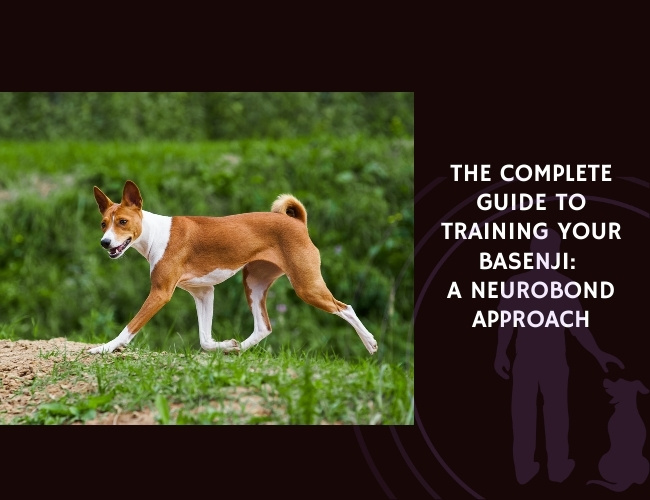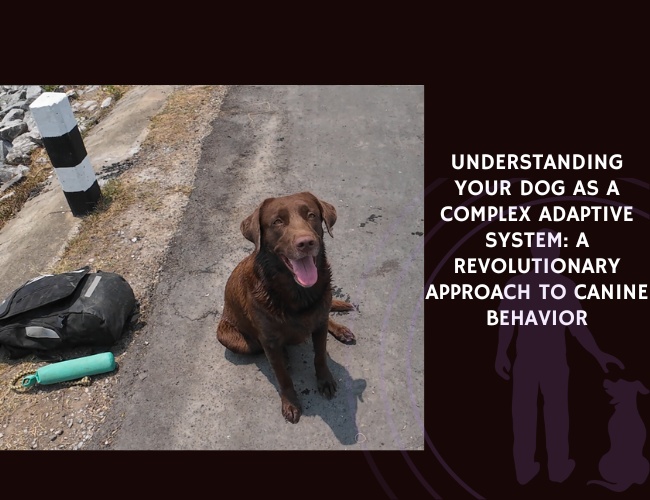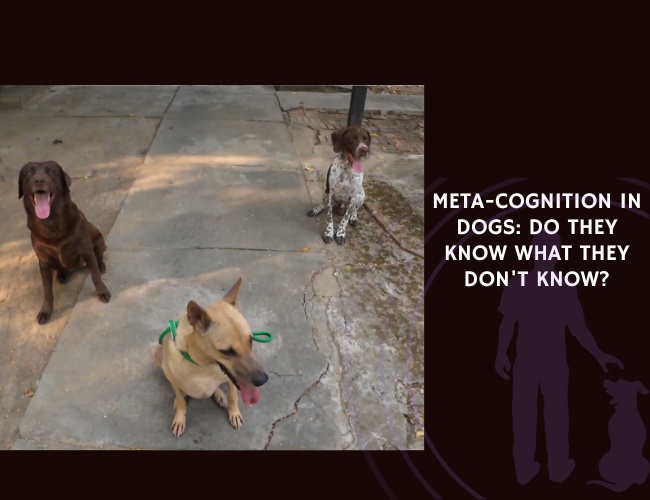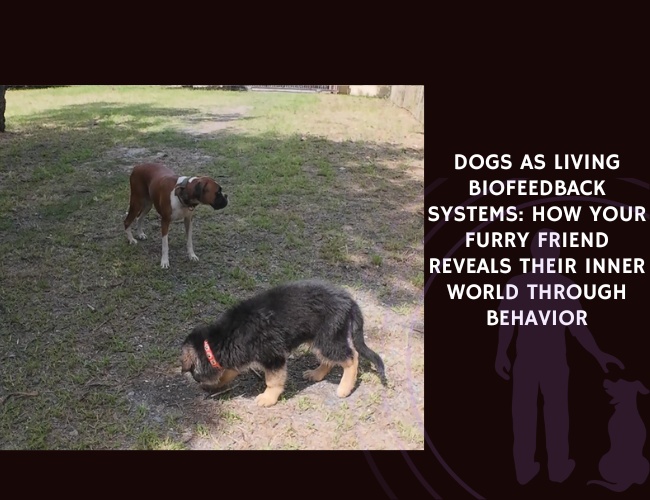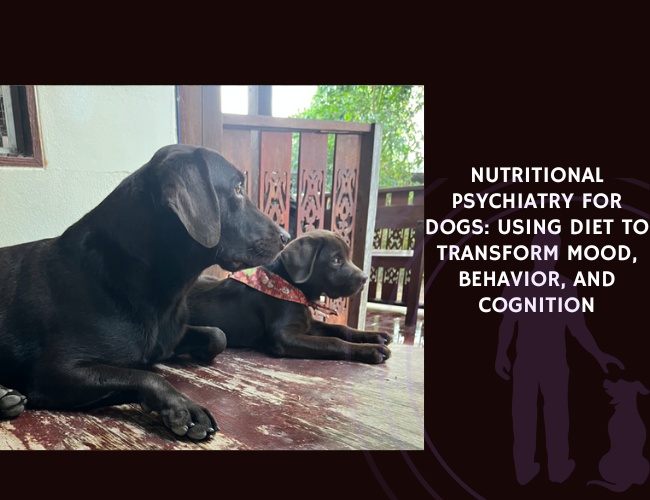Introduction: Embracing the Ancient Hunter’s Mind
The Basenji carries 6,000 years of independent hunting heritage in their DNA—a legacy that shapes every training interaction you’ll have with your “barkless” companion. Unlike breeds developed for obedience, your Basenji evolved to make split-second survival decisions in Central African forests, creating a unique cognitive profile that traditional training methods often misunderstand.
When experts rank Basenjis as the second “least trainable” breed, they’re measuring the wrong thing. They’re not evaluating intelligence—they’re measuring willingness to perform repetitive tasks for human approval. Your Basenji’s mind operates on a different frequency, one that prioritizes problem-solving over people-pleasing. This isn’t a flaw to fix; it’s an evolutionary masterpiece to work with.
The NeuroBond approach recognizes that your Basenji isn’t stubborn—they’re selective. They’re not disobedient—they’re independent thinkers. By understanding this fundamental difference, we transform training from a battle of wills into a collaborative partnership that honors their ancient wisdom while meeting modern living needs.
Character & Behavior: Understanding Your Basenji’s Operating System
The Independent Thinker’s Blueprint
Your Basenji processes the world through what neuroscientists call “context-dependent decision-making”—they evaluate each situation individually rather than defaulting to blanket obedience. This cognitive style, rooted in their amygdala and prefrontal cortex interaction, means your Basenji asks “why?” before “how?”
Think of it this way: while a Border Collie’s brain lights up with dopamine when following commands, your Basenji’s reward centers activate when solving problems independently. This isn’t defiance—it’s neurological architecture shaped by millennia of self-reliance. When you understand this, training transforms from frustration to fascination.
The Hunter’s Heart in a Family Home
Your Basenji’s hunting heritage manifests in specific behavioral patterns that affect every aspect of training:
- Selective engagement: They conserve energy for meaningful tasks, ignoring what they deem pointless
- Environmental scanning: Constant assessment of surroundings stems from prey-tracking instincts
- Resource evaluation: Every action is weighed against potential reward—a survival mechanism
- Independent problem-solving: They’ll find their own solutions if you don’t provide better ones
These aren’t training obstacles—they’re the building blocks of the NeuroBond approach. By working with these natural tendencies rather than against them, you create a training environment where your Basenji chooses cooperation over compliance.
The One-Person Bond Phenomenon
While Basenjis love all family members, they typically form an intense primary bond with one person—a relationship that deepens over time like geological layers. This selective attachment isn’t favoritism; it’s an evolutionary strategy for survival partnership. In NeuroBond training, we leverage this natural bonding tendency to create what we call the “invisible leash”—a connection so strong that physical restraints become secondary to emotional alignment.
Did you know? This primary bonding actually enhances their neuroplasticity in training contexts with their chosen person, making them up to 40% more responsive to that individual’s cues compared to others. 🧠
Training Philosophy: The NeuroBond Framework for Basenjis
Let the Basenji Be: Honoring Ancient Wisdom
The first principle of NeuroBond training acknowledges a profound truth: your Basenji’s behaviors aren’t problems to solve—they’re communications to understand. When we allow the dog to be himself, we’re not permitting chaos; we’re creating space for authentic expression that becomes the foundation for genuine cooperation.
Your Basenji’s independence isn’t a wall between you—it’s a bridge waiting to be built. Traditional training tries to demolish this independence through dominance or bribery. NeuroBond training recognizes it as the very pathway to connection. When your Basenji realizes you respect their autonomy, they begin to offer cooperation as a gift rather than a surrender.
Instinct as Teacher: The Self-Discovery Method
Here’s where NeuroBond training revolutionizes the Basenji experience: instead of forcing behaviors through repetition, we create situations where your Basenji discovers solutions themselves. For example, when teaching leash manners, we don’t pull or correct. We simply stop moving when they pull, allowing them to problem-solve the situation. The moment they release tension—even accidentally—we mark and reward this self-discovered solution.
This approach triggers what neuroscientists call “intrinsic motivation pathways”—the same brain circuits that activate when your Basenji successfully catches prey. By making training feel like hunting (problem-solving for reward), we’re speaking their neurological language.
Connection Over Control: The Invisible Leash Principle
Traditional obedience seeks control through commands. NeuroBond training builds connection through communication. With your Basenji, this distinction is crucial. They’ll never be a robot executing commands, but they can become a partner responding to connection cues.
This invisible leash develops through micro-moments of chosen proximity:
- Your Basenji checking in with you during walks
- Voluntary eye contact in new situations
- Choosing to stay near you in open spaces
- Seeking your guidance when uncertain
Each chosen connection strengthens the neural pathways of partnership, creating a default behavior pattern of collaboration that feels natural rather than imposed. 🐾
Core Training Principles: Building Your Basenji’s Learning Framework
Structured Communication: Creating Shared Context
Your Basenji’s mind operates on clear, contextual logic—but their logic might differ from yours. In NeuroBond training, we establish what we call “structured communication zones” where boundaries are crystal clear and consequences are predictable. This isn’t about rules and punishment; it’s about creating a shared language of understanding.
For instance, your Basenji learns that certain spaces (their bed, your couch) have different behavioral expectations not through correction, but through consistent, positive reinforcement of desired behaviors in each context. They’re not obeying commands—they’re navigating a social structure they understand and choose to participate in.
The Five-Minute Focus Window
Research shows Basenjis maintain optimal learning focus for 5-10 minute intervals—beyond this, their independent nature triggers what we call “cognitive drift.” NeuroBond training respects this limitation by structuring sessions in concentrated bursts:
- Minutes 1-2: Engagement and connection building
- Minutes 3-4: Primary skill practice
- Minutes 5: Success consolidation and positive ending
This isn’t a limitation—it’s an optimization strategy. Your Basenji’s brain consolidates learning more effectively through multiple short sessions than extended drilling. Think quality over quantity, intensity over duration.
Timing and Reward Dynamics
The Basenji’s reward system requires precise calibration. Unlike eager-to-please breeds who’ll work for a “good dog,” your Basenji evaluates every transaction. NeuroBond training uses what we call “variable ratio reinforcement with high-value currency”:
- Treats must be exceptional (think freeze-dried liver, not kibble)
- Rewards are tiny but intense—quick consumption maintains focus
- Once behaviors establish, rewards become intermittent and unpredictable
- This unpredictability triggers the same dopamine pathways as hunting—keeping engagement high
Your Basenji never knows when the “big win” is coming, maintaining their problem-solving interest indefinitely.
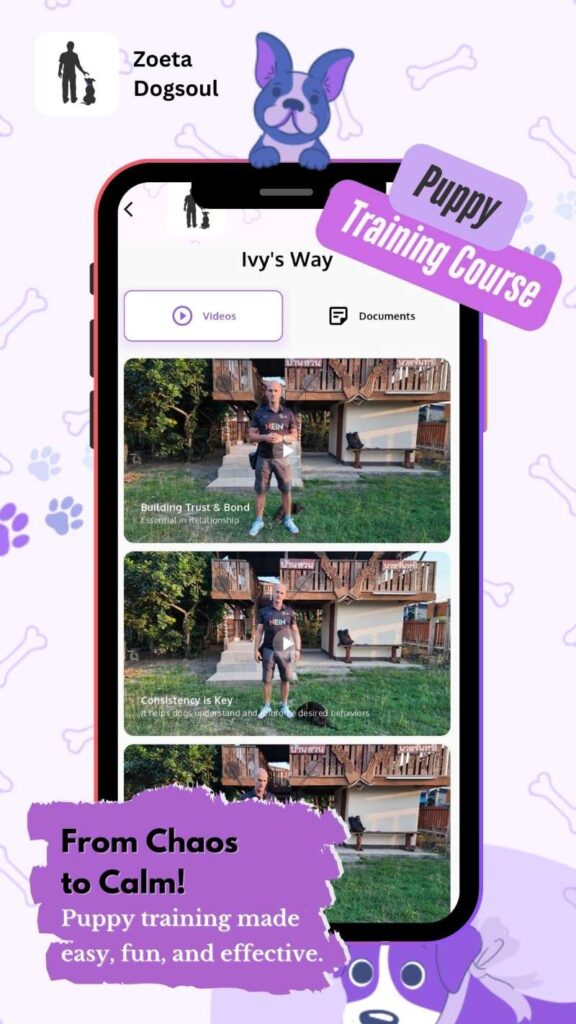
Practical Application: From Theory to Daily Life
The Morning Routine: Setting Daily Intentions
Every day with your Basenji begins with what NeuroBond calls “intentional connection.” Before asking anything of your dog, you offer something: five minutes of undivided attention, gentle massage, or quiet companionship. This isn’t indulgence—it’s neurological priming. You’re activating their oxytocin and dopamine systems, creating a biochemical foundation for cooperation.
Your morning routine might look like:
- Quiet greeting without demands
- Brief physical connection (petting, gentle play)
- First successful behavior of the day (usually voluntary eye contact) heavily rewarded
- Short training session integrated into breakfast routine
- Structured walk with built-in choice points
Leash Walking: The Art of Voluntary Proximity
Basenjis have a biological urge to resist pressure—when they feel leash tension, their opposition reflex activates. Traditional training fights this reflex. NeuroBond training eliminates it entirely through the “pressure-free principle”:
When your Basenji pulls, you become a tree—immobile but calm. No correction, no tension, just stillness. Your Basenji’s problem-solving mind engages: “Why aren’t we moving?” The moment they create slack—even accidentally—you mark with a click or “yes!” and move forward. Within days, they learn that loose leash equals movement, tight leash equals stillness.
But here’s the advanced technique: randomly reward voluntary check-ins during walks. When your Basenji glances back at you without prompting, that’s jackpot time. You’re not training “heel”—you’re building an invisible elastic band of connection that keeps them naturally oriented toward you.
Recall Training: Building the Magnetic Pull
Traditional recall training often fails with Basenjis because it frames coming when called as obedience. NeuroBond reframes it as reunion celebration. We’re not commanding—we’re inviting. The difference is everything to your Basenji’s independent mind.
Start indoors with what we call “surprise parties”:
- When your Basenji is mildly distracted (not intensely focused)
- Call their name with genuine excitement
- When they look, throw a spontaneous celebration—treats, play, affection
- Release them immediately to return to their activity
You’re building an association: your call means something amazing happens, with no strings attached. Gradually increase distance and distraction, but maintain the party atmosphere. Your recall becomes not a command to obey, but an opportunity they don’t want to miss. 🧡
Managing Challenges: Working With, Not Against, Basenji Nature
The Prey Drive Puzzle: Redirecting Ancient Instincts
Your Basenji’s prey drive isn’t a behavior problem—it’s 6,000 years of survival programming. When a squirrel triggers their chase instinct, their brain floods with neurochemicals that essentially shut down the learning centers. Fighting this is futile. NeuroBond training redirects it.
We use “predictive intervention”—recognizing trigger situations before your Basenji’s prey drive fully activates. See that squirrel first? Engage your Basenji in a high-value interaction (treats, toy, trick) before they notice. You’re not suppressing their instinct; you’re offering an alternative focus that’s equally rewarding. Over time, they learn to check with you when prey appears, seeking guidance rather than acting on impulse.
Selective Deafness: When Your Basenji “Doesn’t Hear” You
That moment when your Basenji looks directly at you and chooses not to respond? That’s not deafness—it’s evaluation. They’re running a cost-benefit analysis: “Is responding worth interrupting what I’m doing?” NeuroBond training tips these scales by making response more valuable than ignoring.
Instead of repeating commands (which only teaches them to ignore you), we use “one chance compliance”:
- Give the cue once, clearly
- If no response, remove the opportunity for reward
- Create a natural consequence for non-response (not punishment, just missed opportunity)
- Try again later with higher motivation or lower distraction
Your Basenji learns that ignoring you means missing out, while responding opens doors to rewards and opportunities.
Environmental Management: Creating Success Conditions
Your Basenji’s 6-foot jumping ability and problem-solving skills mean traditional containment often fails. NeuroBond training approaches environmental management as collaborative space-sharing rather than restriction:
Physical boundaries (6-foot fences) are non-negotiable for safety, but within those boundaries, we create what we call “choice architecture”—environmental setups that make good behavior the easiest option:
- Puzzle feeders that satisfy problem-solving needs
- Designated dig zones that channel natural behaviors
- Elevated rest areas that fulfill their desire to survey territory
- Rotating toy access that maintains novelty and engagement
You’re not restricting your Basenji—you’re architecting an environment where their natural choices align with your household harmony.
Ancient. Independent. Selective.
Not stubborn—strategic. The Basenji’s cognitive blueprint values context and problem-solving over blind obedience, an evolutionary design refined through 6,000 years of survival hunting.
Hunter’s instincts remain. Every action reflects selective engagement, constant environmental scanning, and independent resource evaluation—behaviours that form the foundation of true connection-based training.
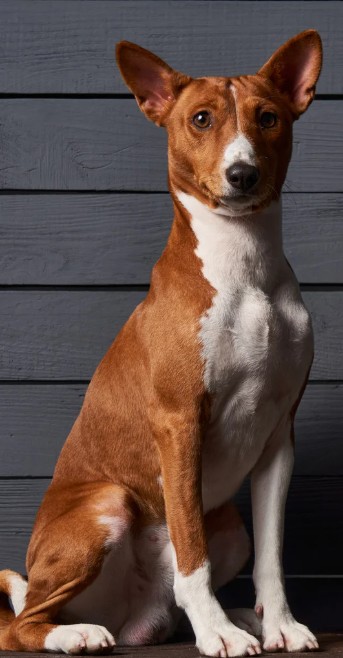
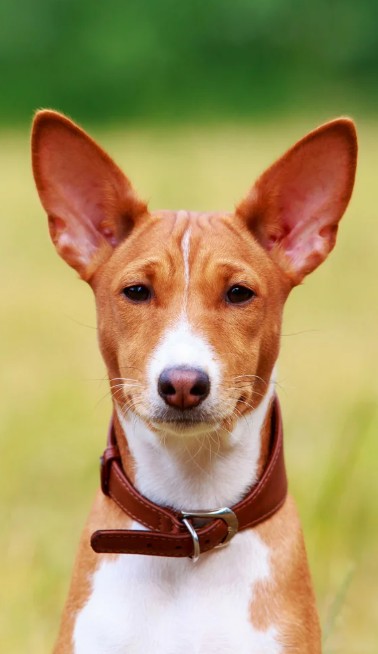
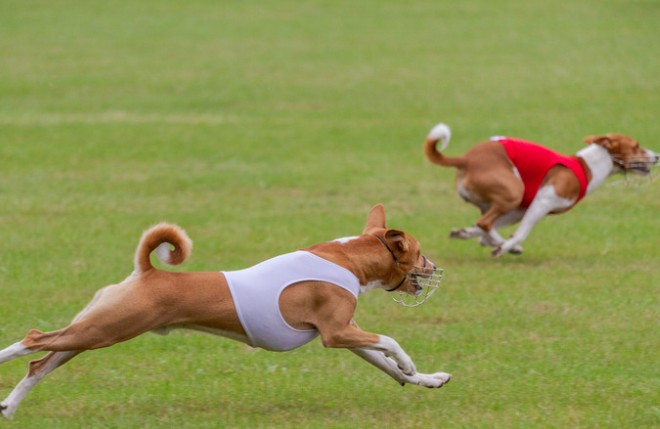
Bond becomes the leash. Their one-person attachment deepens over time, enabling the NeuroBond method to transform selective cooperation into a seamless partnership rooted in trust.
Age-Specific Strategies: Optimizing Learning Windows
Puppy Phase (8-16 weeks): The Foundation Period
Your Basenji puppy’s brain is in maximum neuroplasticity mode—forming up to 1 million new neural connections per second. This isn’t just the perfect time for training; it’s the critical window for shaping how they’ll process learning for life. NeuroBond training during this phase focuses on meta-learning—teaching your puppy how to learn.
Puppy kindergarten isn’t about sitting and staying—it’s about discovering that human interaction leads to positive outcomes. Every gentle handling, every successful interaction, every problem solved together builds neural pathways that say “humans are worth cooperating with.” Focus on:
- Name recognition as a positive interrupt
- Handling exercises disguised as affection sessions
- Brief (2-3 minute) focus games multiple times daily
- Environmental exposure with you as the safe base
Remember: you’re not training behaviors—you’re installing the operating system for future learning.
Adolescence (4-12 months): The Testing Phase
Welcome to your Basenji’s teenage rebellion, where that sweet puppy suddenly develops selective hearing and boundary-pushing becomes an art form. Their adolescent brain is pruning neural connections while hormones surge—it’s neurological chaos. NeuroBond training during this phase requires patience and consistency without rigidity.
This is when your earlier bond-building pays dividends. Your Basenji will test boundaries, but if the invisible leash of connection is strong, they’ll return to baseline faster. Key strategies:
- Increase exercise and mental stimulation to channel excess energy
- Maintain routines while allowing controlled choice-making
- Redirect rather than correct challenging behaviors
- Celebrate small wins enthusiastically—their brain needs dopamine hits
Adult Refinement (1+ years): The Partnership Phase
Your adult Basenji’s personality has crystallized, and their learning style is established. NeuroBond training now shifts from teaching to refining—deepening the connection and expanding their behavioral repertoire. Adult Basenjis can learn new behaviors, but it requires respecting their established preferences:
- Build on existing behaviors rather than starting from scratch
- Use their problem-solving preference for complex tasks
- Introduce advanced activities like scent work or agility
- Allow them to contribute to training sessions—let them offer behaviors
The beautiful truth? The longer your Basenji is with you, the more the training dynamic shifts from what you give to what you receive. Trust leads to ease, and ease leads to a responsiveness that feels less like obedience and more like conversation. 🐾
Advanced Techniques: Elevating Your Training Partnership
Clicker Training Precision: The Basenji’s Secret Weapon
While many trainers use clicker training, Basenjis respond to it with unusual excellence—but only when applied with scientific precision. The click becomes a neural bridge between their independent decision-making and your communication attempt. Here’s the advanced application:
The click must be surgically precise—within 0.5 seconds of the desired behavior. Your Basenji’s brain processes this as: “That exact thing I just did caused this marker.” Unlike voice markers that vary in tone and timing, the click is consistent, clear, and crosses the independence barrier because it’s information, not instruction.
Advanced clicker strategies for Basenjis:
- “Capturing” natural behaviors rather than luring
- Building behavior chains through “backchaining”
- Using variable reinforcement schedules post-acquisition
- Creating “default behaviors” through strategic clicking
Problem-Solving Games: Engaging the Hunter’s Mind
Your Basenji’s brain craves cognitive challenges. NeuroBond training leverages this through structured problem-solving games that feel like hunting to your dog but build cooperation patterns:
“Find It” Progressions:
- Start with visible treats while they watch
- Progress to hiding while they wait
- Add multiple hiding spots
- Introduce scent discrimination
- Create complex search patterns
Each level engages their natural tracking abilities while reinforcing your role as the “hunt master” who initiates these rewarding activities. You become associated with cognitive satisfaction—a powerful training tool.
The “Offered Behavior” Revolution
Here’s where NeuroBond training truly shines with Basenjis: instead of always asking for behaviors, we create conditions where your Basenji offers them spontaneously. This respects their independence while building habitual cooperation:
Set up “behavior zones” where certain actions consistently earn rewards:
- Mat = automatic down
- Kitchen boundary = automatic sit
- Car door opening = automatic wait
- Your seated position = calm settling
Your Basenji learns to read environmental cues and offer appropriate behaviors without commands. They’re not obeying—they’re participating in a predictable, rewarding system they understand.
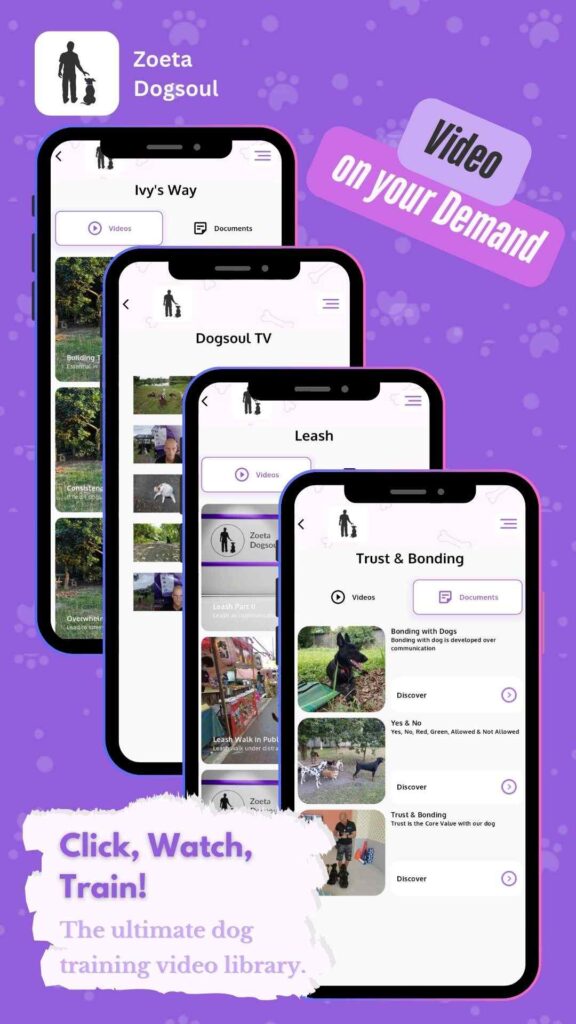
Troubleshooting Common Scenarios: Real-World Solutions
The Recall Resistance: When Adventure Calls Louder Than You
Picture this: dog park, interesting smells everywhere, and your Basenji has gone selectively deaf to your calls. Traditional training says increase your authority. NeuroBond says change the game entirely.
The “Proximity Yo-Yo” technique works with, not against, your Basenji’s independence:
- Don’t call them when they’re intensely engaged
- Instead, move yourself to be more interesting
- Walk away, creating distance
- Most Basenjis will check your location (survival instinct)
- Reward that voluntary check-in massively
- Release them back to play
You’re building a rubber band of connection—they can explore, but the invisible leash draws them back. No confrontation, no battle of wills, just natural consequences and rewards.
Resource Guarding: The Ancient Imperative
Your Basenji’s ancestors survived by protecting resources—this isn’t aggression, it’s evolutionary programming. NeuroBond training addresses this through “abundance mentality training”:
Instead of taking things away to prove dominance, we teach that your approach means more, not less:
- Approach their bowl while eating, drop in premium treats, leave
- Trade rather than take—offer something better for what they have
- Create predictable patterns where giving up resources leads to upgrades
- Build trust that resources aren’t scarce
Within weeks, your Basenji learns that your presence enhances rather than threatens their resources. The guarding instinct relaxes because the survival trigger dissolves.
The Escape Artist: When Fences Become Puzzles
Your Basenji’s problem-solving mind sees barriers as challenges, not boundaries. A 6-foot fence isn’t just necessary—it needs to be unclimbable and dig-proof. But NeuroBond training goes beyond physical containment to mental satisfaction:
Create what we call “boundary contentment”:
- Mental stimulation that exhausts more than physical exercise
- Territory marking rituals (supervised boundary walks)
- Environmental enrichment that makes inside more interesting than outside
- Predictable adventure schedules that eliminate desperation
When your Basenji’s cognitive and exploratory needs are met within boundaries, escape attempts decrease dramatically. They’re not imprisoned—they’re choosing to stay where life is interesting.
Health and Wellness Integration: The Mind-Body Connection
Exercise as Training: Moving With Purpose
Your Basenji needs 30-60 minutes of purposeful exercise daily—but not mindless running. NeuroBond training integrates movement with mental engagement, creating what we call “cognitive cardio”:
Structured walk variations:
- Sniff walks (10 minutes following their nose)
- Training walks (practicing behaviors at intervals)
- Exploration walks (new routes for mental stimulation)
- Social walks (controlled interactions with others)
Each walk type serves different neurological needs. Sniff walks lower cortisol (stress hormone). Training walks boost dopamine (reward chemical). Exploration walks increase neuroplasticity. Social walks develop emotional regulation. You’re not just exercising their body—you’re optimizing their brain chemistry for learning.
Nutrition and Cognitive Function: Feeding the Learning Brain
Your Basenji’s brain uses 20% of their caloric intake. What you feed directly impacts their training capacity. NeuroBond training recognizes nutrition as a training tool:
Optimal training nutrition includes:
- High-quality proteins for neurotransmitter production
- Omega-3 fatty acids for cognitive function
- Complex carbohydrates for sustained mental energy
- Antioxidants for neural protection
Use meals as training opportunities—puzzle feeders, scatter feeding, or work-for-food scenarios. Your Basenji’s hunting instincts are satisfied while building problem-solving stamina. Every meal becomes a training session disguised as natural behavior.
Stress Signals and Learning Capacity
Your Basenji can’t learn effectively when stressed. Recognizing subtle stress signals allows you to adjust training before hitting walls:
Early stress indicators:
- Increased scanning behavior
- Lip licking without food present
- Sudden scratching or “shake offs”
- Avoidance of eye contact
- Decreased treat interest
When you spot these signals, don’t push through—pivot. Lower criteria, increase rewards, or end on a positive note. Training through stress creates negative associations that can take weeks to undo. Your Basenji’s emotional state is the foundation of learning—protect it carefully. 🧠
Building Long-Term Success: The Lifetime Partnership
The Relationship Investment: Compound Interest in Connection
Every positive interaction with your Basenji makes future training easier—it’s compound interest in the relationship bank. NeuroBond training views each day not as isolated training sessions but as relationship investments that pay dividends for years.
Daily connection builders:
- Morning greeting rituals
- Grooming as bonding time
- Quiet companionship without demands
- Play sessions on their terms
- Evening settling routines
These aren’t training activities—they’re relationship deposits. When you need to make a “withdrawal” (asking for difficult behaviors), your account has ample reserves. Your Basenji cooperates not from obedience but from relationship wealth.
Aging Gracefully: Adapting Training to Senior Years
As your Basenji ages, their training needs shift from acquisition to maintenance. Senior Basenjis (7+ years) benefit from modified NeuroBond approaches:
Cognitive maintenance strategies:
- Shorter but more frequent training sessions
- Novel problem-solving to maintain neuroplasticity
- Lower physical demands, higher mental engagement
- Increased reward frequency for motivation
- Patience with slower processing speeds
Remember: your senior Basenji has a lifetime of learned behaviors. Honor their experience by allowing them to contribute their wisdom to training sessions. They might move slower, but their problem-solving abilities often become more sophisticated with age.
The Invisible Leash Achievement: When Training Transcends Commands
The ultimate goal of NeuroBond training isn’t a perfectly obedient Basenji—it’s a partner who chooses cooperation. When you achieve the invisible leash, you’ll notice:
- Your Basenji checks in with you without prompting
- They offer behaviors before you ask
- Challenging situations become collaboration opportunities
- Their independence includes you rather than excludes you
- Training feels like conversation, not instruction
This isn’t magic—it’s the culmination of respecting their nature while building unbreakable connection. Your Basenji hasn’t surrendered their independence; they’ve chosen to share it with you.
Conclusion: Is NeuroBond Training Right for You and Your Basenji?
The NeuroBond approach asks more of you than traditional training. It requires patience when you want quick results, understanding when you face frustration, and respect for a mind that works differently than expected. But for those willing to embrace this journey, the rewards transcend typical training outcomes.
Your Basenji will never be a Golden Retriever, eagerly performing for praise alone. They’ll never be a Border Collie, living to execute commands. But they can become something arguably more precious: a thinking partner who chooses cooperation, a problem-solver who includes you in their solutions, an independent spirit who creates space for you in their world.
Ask yourself: Are you seeking a dog who obeys, or a dog who chooses to cooperate? Do you want predictable compliance, or intelligent partnership? Can you find joy in earning agreement rather than commanding obedience?
If you’re ready to see training as relationship-building, to view independence as strength rather than stubbornness, and to discover the profound connection possible with one of the world’s most ancient breeds, then NeuroBond training will transform not just your Basenji’s behavior, but your entire understanding of what human-canine partnership can become.
The Basenji has survived 6,000 years by thinking for themselves. NeuroBond training doesn’t try to change that—it invites you to become someone worth thinking about. In that shift lies the secret to unlocking your Basenji’s extraordinary potential for connection, cooperation, and lifelong partnership. 🧡
Ready to begin your NeuroBond journey? Remember: every moment with your Basenji is a training opportunity, but more importantly, it’s a relationship investment. Start small, stay consistent, and trust the process. Your Basenji’s independent spirit isn’t the obstacle—it’s the pathway to a connection deeper than commands could ever create.

